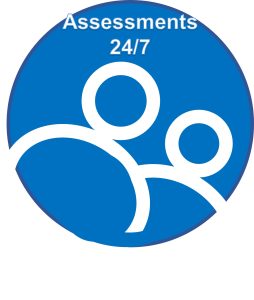Published with Permission from Assessments 24/7.

This is a Monday blog series; our regular coaching blog will be published on Thursday’s.
With the exploration of the DISC styles in this blog series covered, shift now to how to communicate with each style by starting with how to listen and ask questions.
Dominance – High “D” Style
- Listen to what they want to accomplish, how they are motivated and what they would like to change
- Convey openness and acceptance of them
- Read between the lines for what isn’t being said and clarify as succinctly as you can
- Listen to their suggestions and let them direct toward goals/outcomes when possible
- Appreciate and acknowledge them when possible
- Maintain eye contact and don’t interrupt
- Summarize their achievements and accomplishments
Influence – High “I” Style
- Show you are interested in them, let them talk and be enthusiastic
- Listen to their dreams and goals
- Listen to their personal feelings and experiences
- Give them your attention, time, and presence
- Be sure to maintain eye contact when listening to them, engage with them
- Provide positive feedback; compliment them, when appropriate
- Match their energy, tone, and pace
Steadiness – High “S” Style
- S styles need patience and reassurance, provide encouragement as they speak in nods and active attentiveness
- Be sensitive to their feelings and emotions
- Listen to how something affects them and their relationships with others
- Listen for the risk or changes they may want to avoid
- Allow time for them to share; they are not likely to speak or respond quickly
- Summarize what they said to show you understand
- Listen for opportunities to provide positive feedback and appreciation
Conscientiousness – High “C” Style
- Listen for ways to compliment them for their thoroughness and correctness, when appropriate
- Listen to their concerns, reasoning, and suggestions
- Listen for specific facts, data, and specifications that are important to them
- Listen for ways they want to solve the problem and be open to their ideas
- Listen for opportunities to tell them “why” and “how”
- Allow time for them to process and share; do not expect them to respond quickly
- Be sensitive to their need to do things themselves and that they may not show outward emotions
How to question the four styles:
Dominance – High “D” Style
- Ask D’s what they want to accomplish, how they are currently motivated and what they would like to change
- Clarify the purpose for asking questions
- Stay focused on goals and objectives
- Make questions practical, logical, and straightforward
- Keep questions direct and to the point
- Get to the point of the coaching session
Influence – High “I” Style
- Get I’s talking about themselves and their interests
- Establish personal relationships before asking questions about business
- Ask about their aspirations and recognize their need to be valued and listened to
- Ask about personal needs they want filled
- Support their ideas
- Gently keep them on topic
Steadiness – High “S” Style
- Speak warmly and informally, asking open questions that draw them out
- Show tact and sincerity in exploring their needs
- Avoid confrontations and challenging questions
- S’s may tell you what they think you want to hear
- Allow time for S’s to open up and reveal their needs and concerns
- Ask them whose assistance they may need
Conscientious – High “C” Style
- Ask questions that reveal their expertise and knowledge
- Ask logical, fact oriented, relevant questions
- Phrase questions that require specific, accurate information to be shared
- Focus questions on processes and efficiency
- Ask questions that reveal a clear direction
- Ask questions that show you are prepared for the coaching session
In the next blog, specific tips for how to coach each of the DISC styles are covered.





